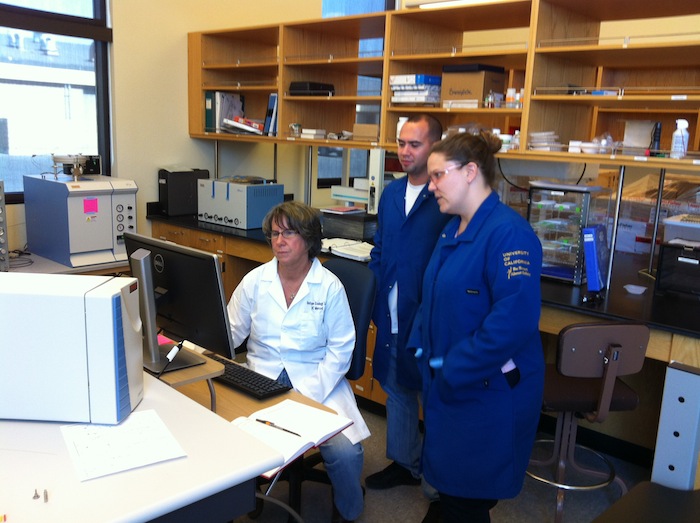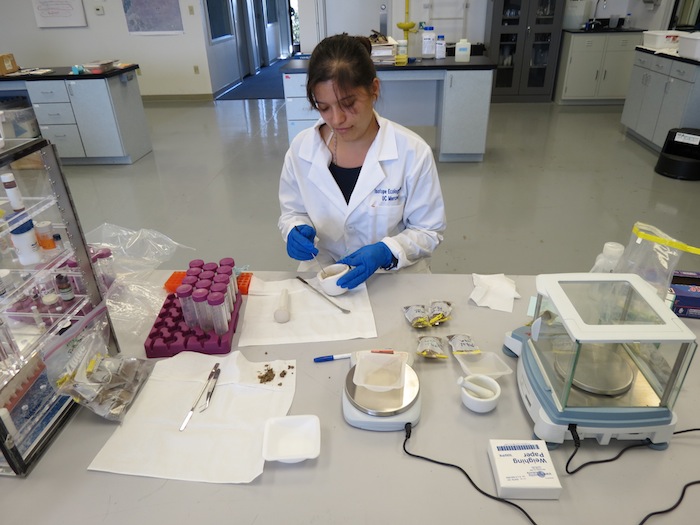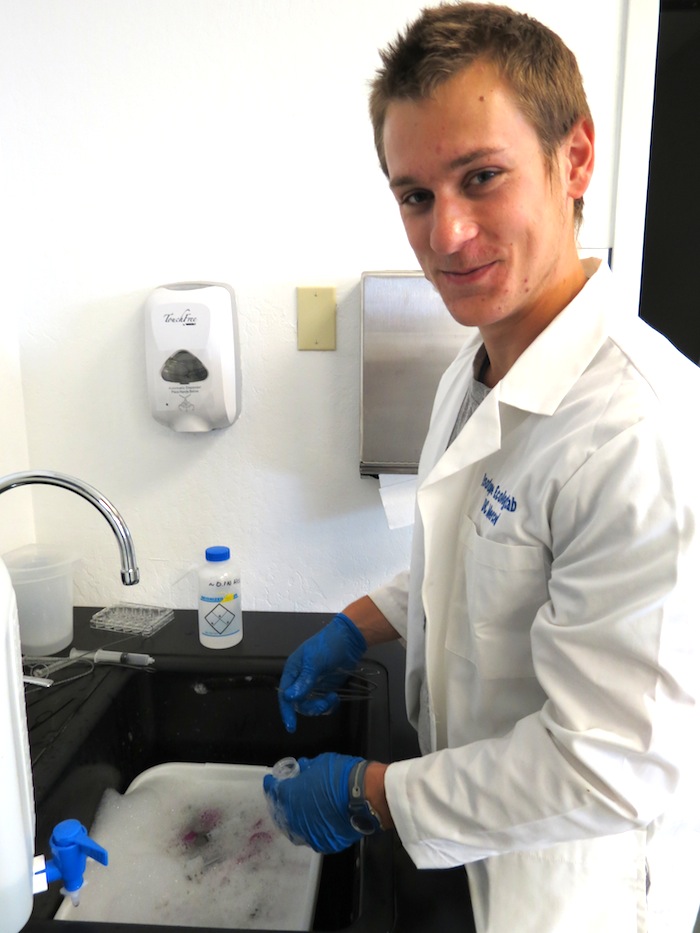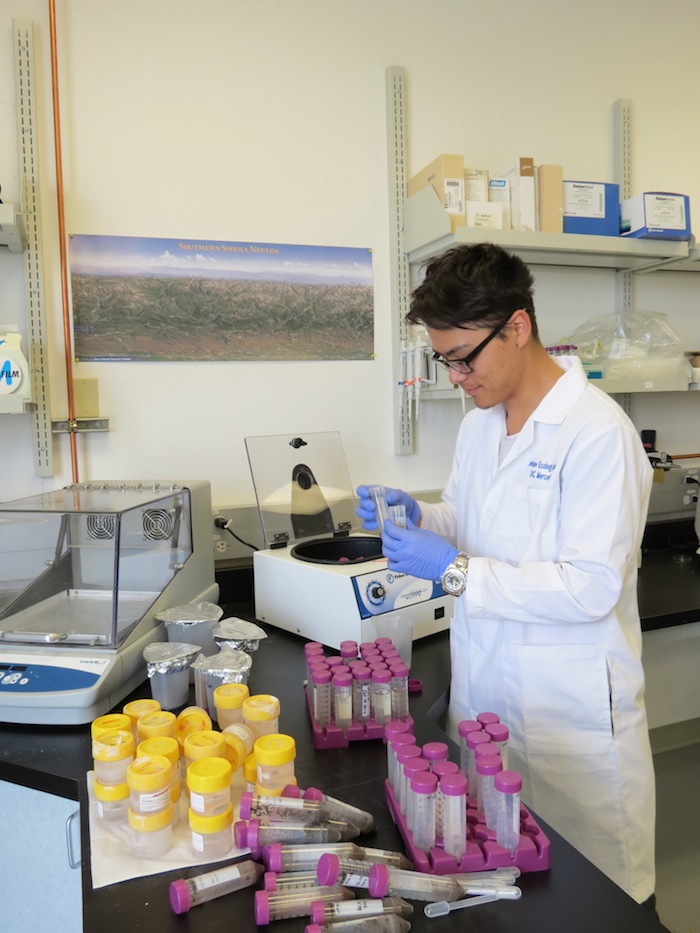 The opportunity to work as the intern for the Reserve gave me an appreciation for the intricacies of our delicate and unique vernal pools ecosystem. The seemingly endless rolling hills, countless arrays of plants and insects and soaring falcons across the Reserve sparked my interest and curiosity to learn more about them. Last spring the Reserve initiated its first conservation project by erecting 10 cavity nest boxes for our resident falcon, the American Kestrel. This gave me the opportunity to study and observe these beautiful birds. As I learned about their behavior, characteristics, diet and plumage I began to understand their role in the vernal pool ecosystem. We recorded chick fledging success and collected regurgitated pellets from each box. As the Kestrels fledged and departed their breeding grounds, I too transitioned into a new realm of exploration.
The opportunity to work as the intern for the Reserve gave me an appreciation for the intricacies of our delicate and unique vernal pools ecosystem. The seemingly endless rolling hills, countless arrays of plants and insects and soaring falcons across the Reserve sparked my interest and curiosity to learn more about them. Last spring the Reserve initiated its first conservation project by erecting 10 cavity nest boxes for our resident falcon, the American Kestrel. This gave me the opportunity to study and observe these beautiful birds. As I learned about their behavior, characteristics, diet and plumage I began to understand their role in the vernal pool ecosystem. We recorded chick fledging success and collected regurgitated pellets from each box. As the Kestrels fledged and departed their breeding grounds, I too transitioned into a new realm of exploration.
This fall I began working in Dr. Marilyn Fogel’s stable isotope lab where I dissected, recorded weights and tested Kestrel pellet content for carbon and nitrogen analysis. This gave me the chance to delve deeper into the realm of ecology and helped me understand the process of data collection and analysis. My colleagues in the lab, David Araiza and Dr. Christina Bradley taught me how to take what I had learned in the field and to study it in a lab. Joy McDermot, Dr. Fogel’s new graduate student is taking on the Kestrel diet study as her master’s project.
 Dr. Fogel’s lab is interested in an integrated analysis of all the species that inhabit the vernal pools reserve and how nutrients cycle through the ecosystem. By collecting, observing and analyzing different aspects of the Reserve ecosystem such as the soil, insects, pellets and plants the lab hopes to develop a comprehensive food web of the reserve using carbon and nitrogen stable isotopes. The team of researchers at Dr. Fogel’s lab are working on creating an inventory of information of certain keystone species such as the Burrowing Owl and the California Gro
Dr. Fogel’s lab is interested in an integrated analysis of all the species that inhabit the vernal pools reserve and how nutrients cycle through the ecosystem. By collecting, observing and analyzing different aspects of the Reserve ecosystem such as the soil, insects, pellets and plants the lab hopes to develop a comprehensive food web of the reserve using carbon and nitrogen stable isotopes. The team of researchers at Dr. Fogel’s lab are working on creating an inventory of information of certain keystone species such as the Burrowing Owl and the California Gro und Squirrel.
und Squirrel.
The Reserve is home to a number of endemic and endangered species that are specialized for vernal pool habitats. In an effort to understand the effects of cattle grazing on the health of vernal pools and how it may affect nutrient availability, the lab has undertaken a two-year study on the biogeochemistry and elemental cycling of the Reserve. Collecting, recording and analyzing the residual dry matter (dried grass) and soils throughout the Reserve, provides a measure of grazing intensity and possibly nutrient availability. Grazing is an important management tool for the Reserve as it creates a symbiotic and beneficial relationship between the cows and the vernal pools.
The connections within this delicate system help balance out the ecosystem but certain conditions such as drought and pollution may throw it off balance. It is important for us to understand our role in this system and how we might affect its synergy. Undergrad lab tech, Bobby Nakamoto is investigating the nitrate and ammonia levels in soils and in precipitation to study their sources from local agricultural fertilizers or from cow manure. The current Reserve intern, Daniel Toews is working on an independent research project pertaining to drought-resistant native plants.
The Fogel Lab is also happy to welcome our new, enthusiastic undergrad volunteers this semester: Samuel Huscher, Adrian Garibay and Margarita Morelos Tapia.


